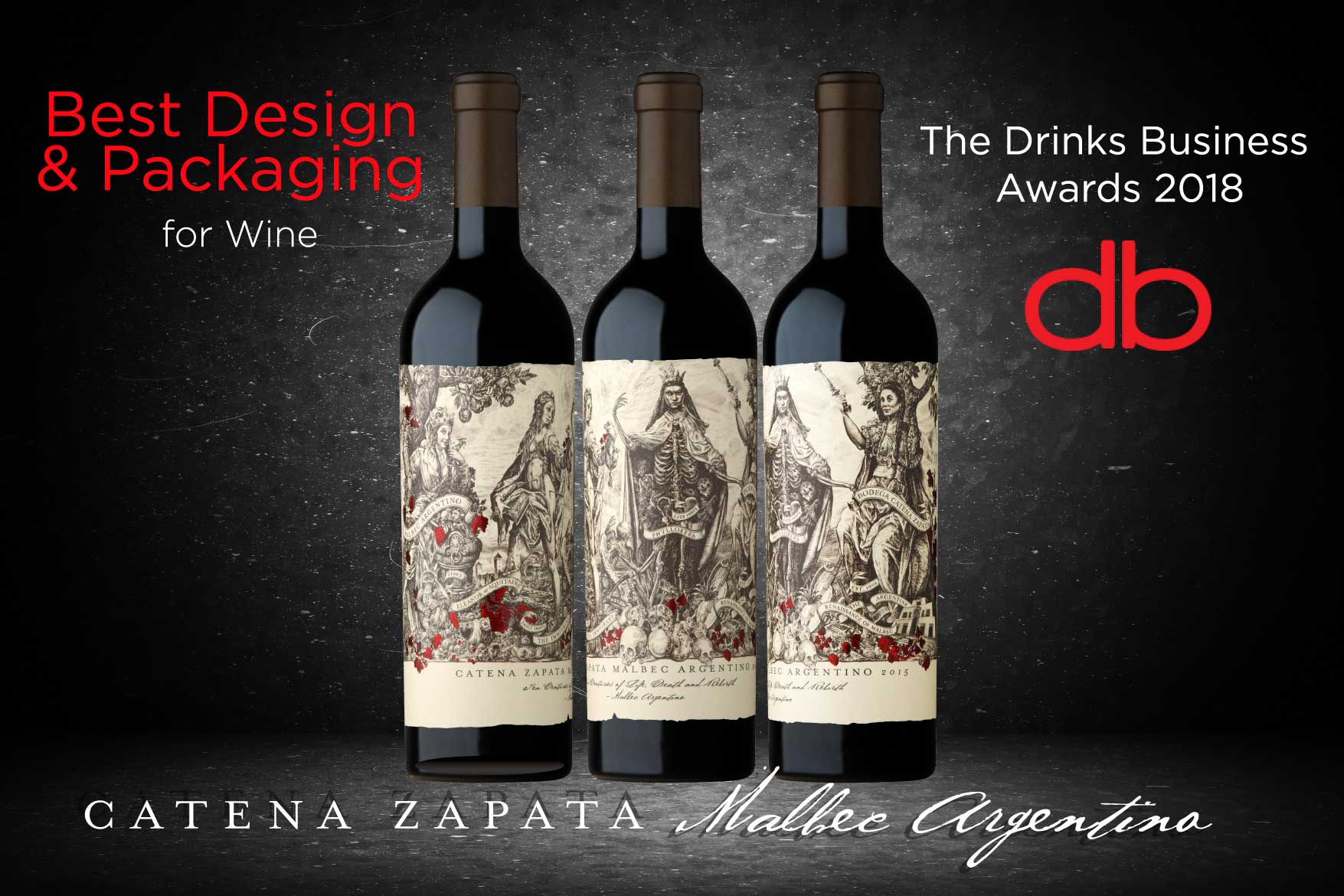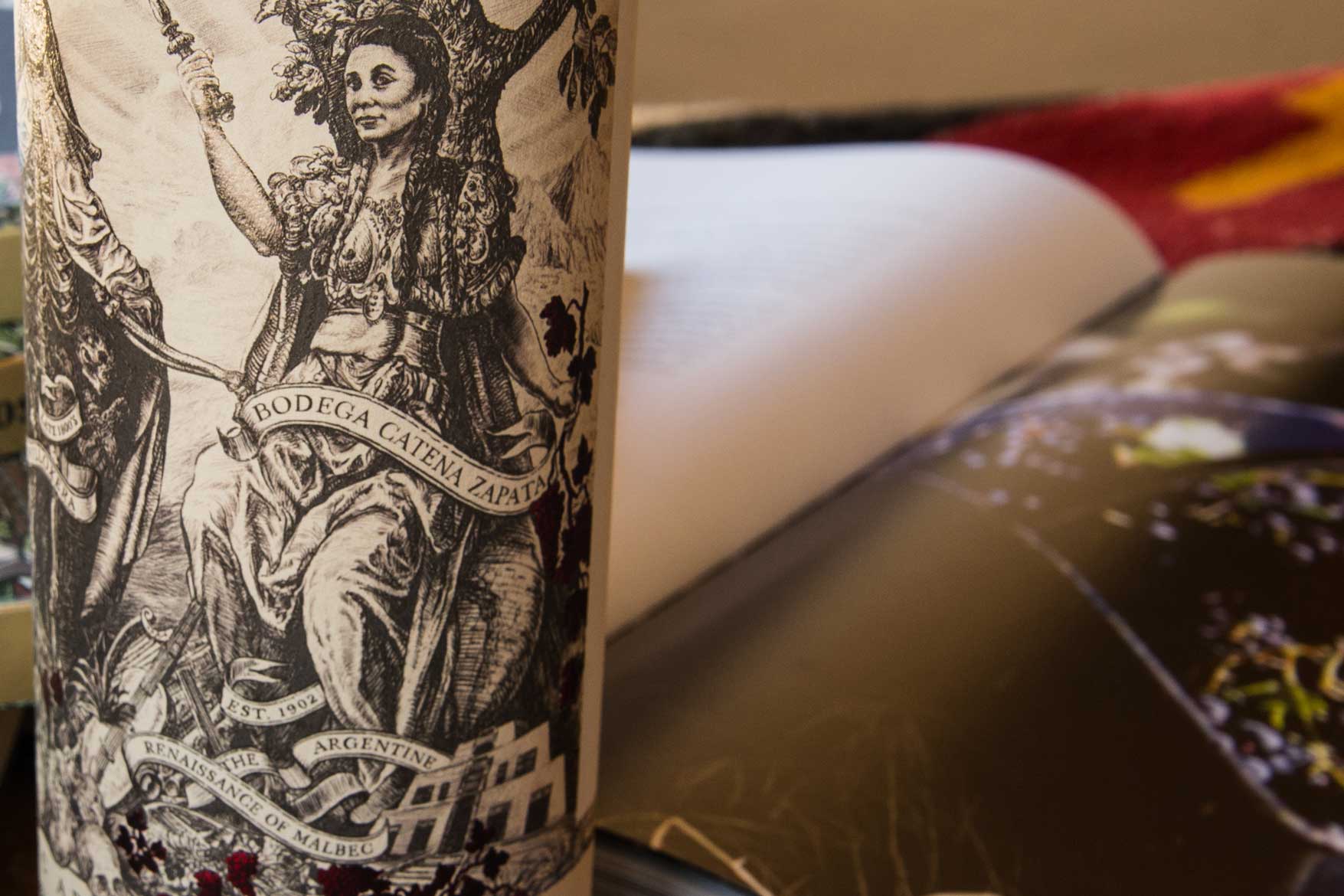PRESS RELEASE
Catena Zapata’s Malbec Argentino: The first label to tell the history of a Wine Variety from a female perspective
Bodega Catena Zapata was founded in 1902 by Nicola Catena, an Italian immigrant to Argentina.
His two great-granddaughters, Doctors Laura and Adrianna Catena, teamed up to make the wine and label for Malbec Argentino.
Pioneering runs in the family. Their father, Nicolás Catena Zapata, is known as the man who revolutionized Argentine wine in the 1980’s by focusing primarily on quality, planting vineyards at 1,500 meters elevation and spearheading the re-entrance of Malbec, the French varietal that had been almost completely forgotten in Europe, into the world of wine.
Dr. Laura Catena, a Harvard and Stanford trained biologist and physician, founder of the Catena Institute of Wine, approached her younger sister Adrianna who holds a PhD in history from Oxford University, to come up with a way to tell the epic tale of the Malbec variety on a label.
After years of being asked by journalists and wine experts “What comes after Malbec in Argentina?”, Laura felt compelled to tell the story of Malbec dating back 2,000 years to Roman times, to its near extinction after Phylloxera in France, to its rebirth and renaissance in Argentina.
Adrianna came back with a proposal inspired by the “Allegorical Representations of the Continents” that were popular in the sixteenth and seventeenth centuries, adding “The last continent added was America. So with this label we wanted to illustrate the history of Malbec in four allegorical figures, and through them propose a different historical perspective, a more global one, perhaps, and one that would highlight its American journey.” And why four women? says Adrianna: “We were also a bit tired of the monotonously male vision that most writings on the history of Malbec (and wine in general) propose. We wanted to honour the women…”
SOME QUOTES ABOUT THE MALBEC ARGENTINO LABEL
“In the second figure, we thought of the faceless immigrant, of today’s millions of refugees worldwide, and looking towards the past, of the hundreds of thousands of Italians, Spaniards, men AND women who crossed the Atlantic, most under duress or to have a chance at a better life, and who embarked upon this dangerous, surely daunting journey to a New World without knowing what would come next. With our narrative, and I would argue not a fictional one at all, we wanted to remember all the women who carried a small vine with them, and cared for it for months seaborne, and planted this child, this new beginning in new lands.”Dr. Adrianna Catena
“The figures in this label are allegorical, representing stages in the history of Malbec through symbols, rather than historical details. So each figure has her attributes, and is surrounded by emblems of the events she represents. Eleanor of Aquitaine embraces a cornucopia, with the bridge of Cahors beneath her feet; the immingrant stands over the Atlantic, in reference to the expression ‘cruzar el charco’ (to cross the puddle), originating in the 16th C and still used, an expression that narrows the distance between each side, bringing immigrants closer to the homes they left, helping them through the difficult journey ahead. Phylloxera is fairly straightforward, besieged and consumed by death. The last figure is seated on a Globe, a symbol of the Catena family’s contribution to Malbec’s global revival and worldwide recognition. Behind her the Andes, our most precious source of water; at her feet the Pyramid, in recognition of the Indigenous cultures that first transfrormed the desert of Mendoza into a fertile region. In her left hand, a vine that leads to the next generation.”Dr. Adrianna Catena
“Historical records tell that Eleanor of Aquitaine imported her native Black Wine (what Malbec was called back then) into England when she became the wife of England’s Henry the 2nd. She is a fascinating figure. Her first husband, the French king had their marriage annulled because after two daughters, he did not think she could provide him with a male heir. Despite her position as a woman, who at that time was considered her husband’s property, Eleanor became the most powerful queen of the Middle Ages, waged wars and established a law protecting country women from being married off by their lord. She lived to the ripe age of 83, outliving both her husbands and all but two of her ten children.”Dr. Laura Catena
“I had a lot of fun with the Phylloxera character. As a biologist I am fascinated by insects and their role in vineyards, sometimes beneficial, sometimes lethal. Part of the mystery of Phylloxera in the 19th Century was that the French scientists couldn’t understand it’s reproductive cycle because the males are almost never seen. Phylloxera the insect mostly exists in the female form. And I thought it was important that not all the women on the label be “good.” We needed a villain and Phylloxera was perfect for this role. Besides, who knows how history might have turned out for our Malbec, if phylloxera had not decimated the European vineyards after Malbec was brought to Argentina.”Dr. Laura Catena
“In my sister Adrianna’s first proposal, the fourth woman was supposed to be me. But I thought it should be Adrianna because she was there with my father when he was planting vineyards in the early 1990’s, at extreme high altitude, in places where he was told the vine would not ripen. My sister was there to support my father during these uncertain times, while my brother and I were in college in the USA. Plus, she had the vision for the label. And finally, because I still couldn’t convince her, I just used my “older sister” voice and she agreed…reluctantly. I just love looking at her beautiful strong face on the label."Dr. Laura Catena
Press Articles

On May 22nd, 2018, the Drinks Business Awards presented first place to the new label in their Best Design & Packaging for Wine category. The international panel of judges assembled by the U.K.-based wine and spirits publication recognized the label's combination of innovation, depth, and visual impact at a ceremony held at the London Wine Fair.
 Read Article
Read Article

Catena Unveils New Label Design Inspired by The History of Malbec
Argentina’s Bodega Catena Zapata has unveiled a new label design for its Malbec Argentino 2015 inspired by the history of its flagship variety and told through four symbolic women.
 Read Article
Read Article

8 Good Reasons to Buy a Wine Based on Its Label
In a serious feat for a small, two-dimensional sticker, this label depicts the story of life, death and rebirth of the Malbec grape variety.
 Read Article
Read Article
Wine Ratings
Vintage 2019
99 POINTS - James Suckling
96 POINTS - The Wine Advocate
Vintage 2018
97 POINTS - James Suckling
95 POINTS - The Wine Advocate
94 POINTS - Vinous
94 POINTS - Tim Atkin
Vintage 2017
97 POINTS - James Suckling
96 POINTS - Tim Atkin
95 POINTS - The Wine Advocate
94 POINTS - Wine Spectator
Vintage 2015
95 POINTS - The Wine Advocate
94 POINTS - James Suckling
94 POINTS - Tim Atkin
SILVER - Decanter
Vintage 2013
95 POINTS - The Wine Advocate
94 POINTS - Vinous
94 POINTS - Tim Atkin
SILVER - Decanter
Vintage 2012
98 POINTS - James Suckling
94 POINTS - The Wine Advocate
94 POINTS - Vinous
Vintage 2011
95 POINTS - The Wine Advocate
94+ POINTS - Vinous
Vintage 2010
94 POINTS - The Wine Advocate
Vintage 2009
95 POINTS - The Wine Advocate
94 POINTS - Vinous
Vintage 2008
97 POINTS - The Wine Advocate
95 POINTS - Vinous
Vintage 2007
97 POINTS - The Wine Advocate
95 POINTS - Vinous
94 POINTS - Wine Spectator
Vintage 2006
96 POINTS - The Wine Advocate
95 POINTS - Wine Enthusiast
94 POINTS - Vinous
Vintage 2005
97+ POINTS - The Wine Advocate
96 POINTS - Wine Enthusiast
95 POINTS - Wine Spectator
94 POINTS - Vinous
Vintage 2004
98+ POINTS - The Wine Advocate
95 POINTS - Wine Spectator